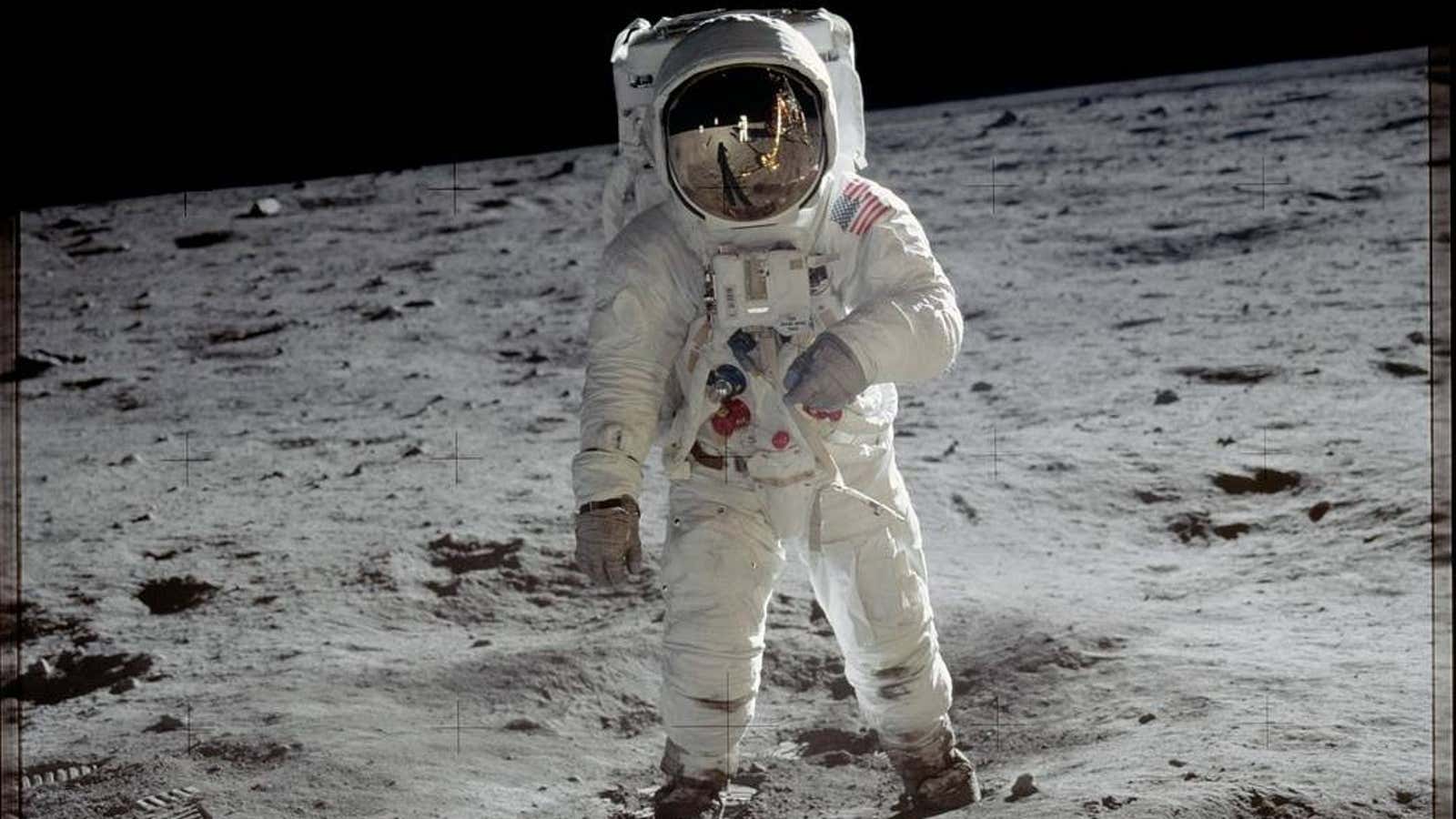Fifty years ago today, the Apollo 11 mission put the first human on the moon. And as Quartz’s Tim Fernholz wrote this week, there is an abundance of fabulous content to consume in commemoration of this miraculous achievement: the new documentary Apollo 11; Charles Fishman’s new book, One Giant Leap, a chronicle of the scramble to create a space travel program; Walter Cronkite’s narration of the event, via the CBS News archives.
Today, we’d like to respectfully add this Twitter thread about peeing in space.
On July 17, Mary Robinette Kowal, the author of said thread, published a story in the New York Times about gender bias in the space program, which apparently generated some commentary about women’s purported inability to urinate in zero-gravity. Kowal, who has apparently researched space urination and defecation extensively—she is also an award-winning author of science fiction, including two novels about space travel—unleashed a stream of factoids about what it takes to make it in space:
The first American in space, Alan Shepard, had to just go in his spacesuit. No plans were made for what should have been a quick journey, but delays on the launchpad ensued. When you gotta go, you gotta go. So Shepard went, and then went into space.
Later, astronauts were provided with condom-like sheaths that came in sizes small, medium, and large—but had to be renamed because no self-respecting astronaut would select the small size.
(Zero-gravity waste management specialist Donald Rethke said the sizes were actually renamed “large, gigantic, and humongous” in the documentary Moon Machines 2008.)
Kowal noted that the system for Apollo involved astronauts using condoms attached to valves that could “have their urine sucked into the vacuum of space.” And when they left the ship for spacewalks, they were back to peeing into receptacles in their suits.
It was only when NASA decided to send women into space that the system improved, thanks to the MAG, or maximum absorbency garment. “It’s a diaper,” wrote Kowal, adding that the men switched to it too, “because it was more comfortable and less prone to leave pee floating around the cabin than the condom sheath.”
Today, Kowal also live-tweeted the launch of three astronauts aboard a Soyuz bound for the International Space Station. She noted the beauty of the launch—”the hole it literally punched in the clouds!”—and provided insight about the astronaut’s suits.
“Yes, they are all wearing MAGs,” she noted. “Space is glamorous, y’all.”
